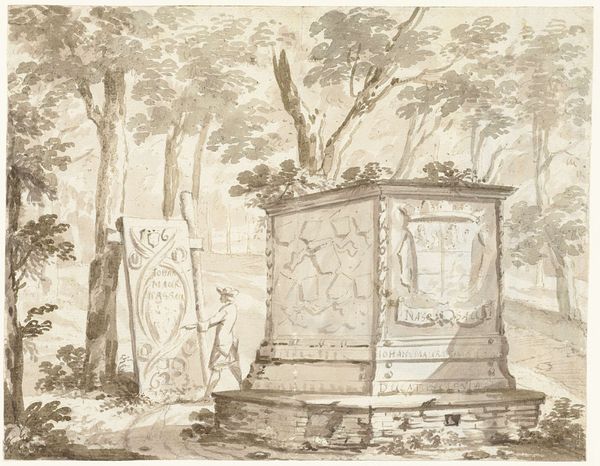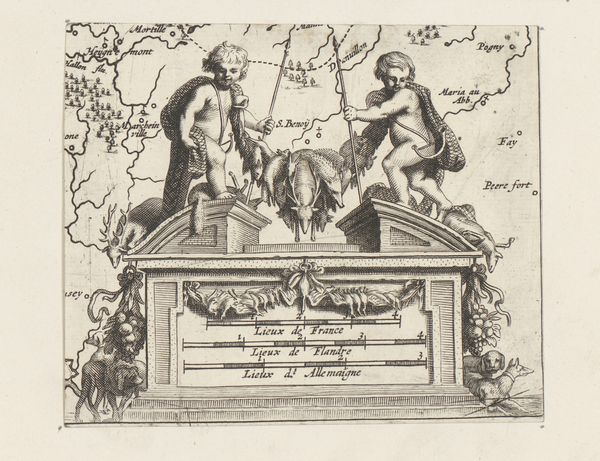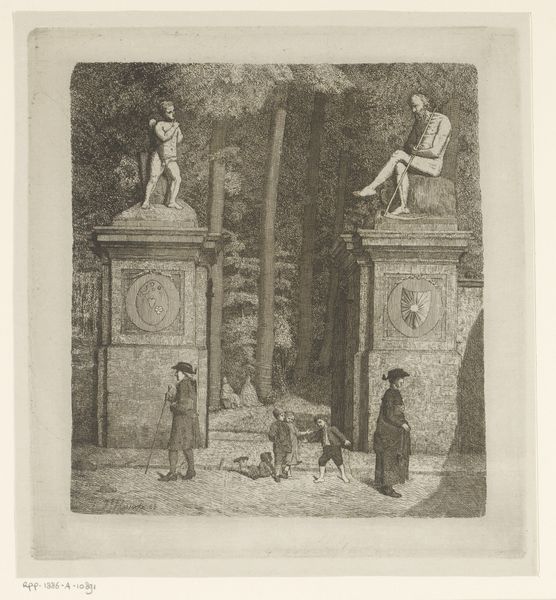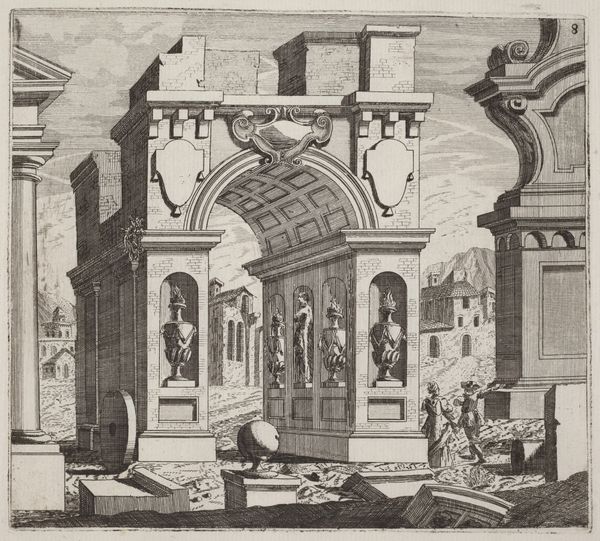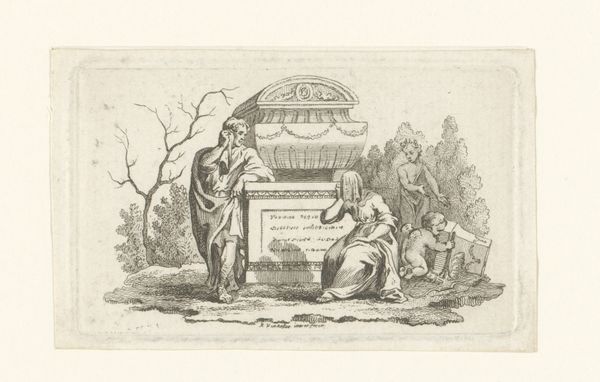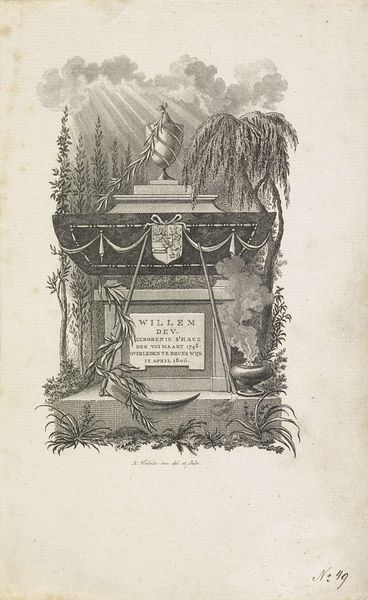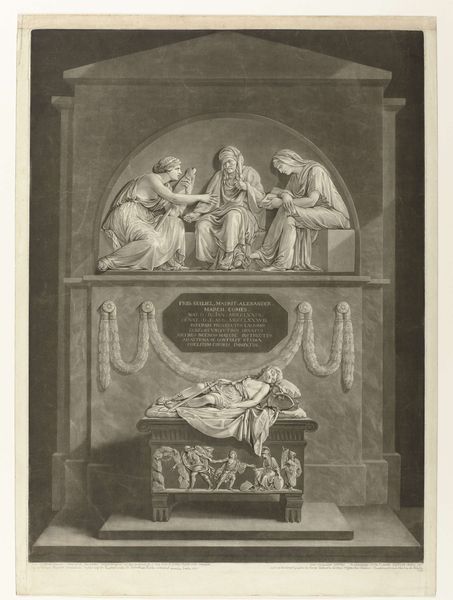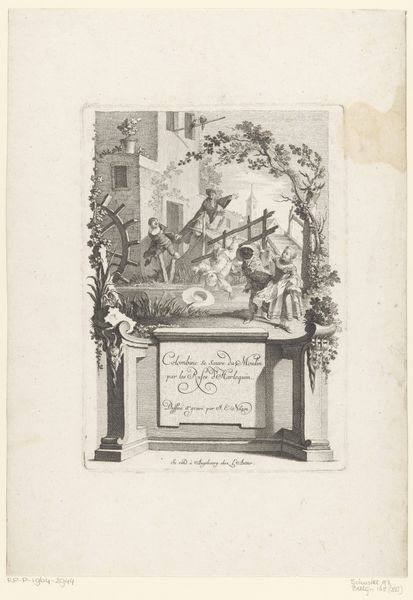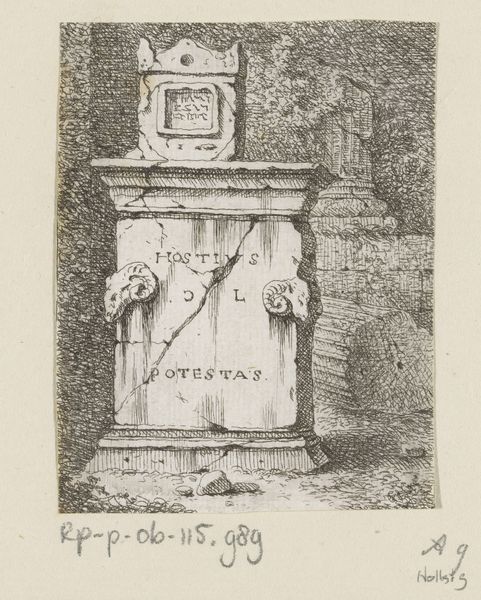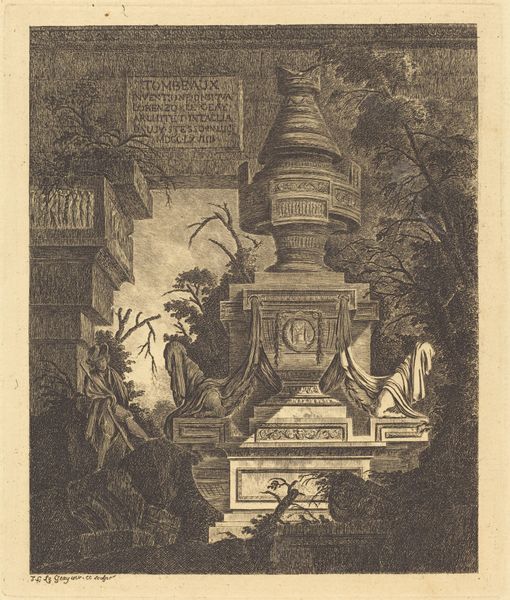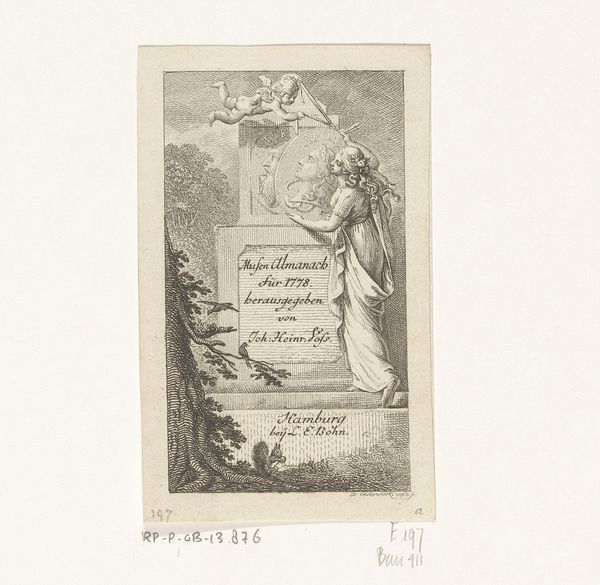
print, etching, engraving
#
neoclassicism
# print
#
etching
#
landscape
#
classicism
#
history-painting
#
engraving
Dimensions: plate: 25.2 × 35.5 cm (9 15/16 × 14 in.) sheet: 30.6 × 49.4 cm (12 1/16 × 19 7/16 in.)
Copyright: National Gallery of Art: CC0 1.0
Curator: Let’s take a closer look at this print, dating back to around 1786. It's titled "Title Page," and it seems to be an etching and engraving, probably intended as the opening illustration for a book or collection of prints. Editor: Oh, I see it right away! It gives a dream-like sensation, as if Rome is both remembered and half-imagined. Ruins merge with precise renderings. Very sentimental and intellectual, all at once. Curator: Well, "sentiment" in relation to landscape prints wasn't an accident at this time. Think about the printmaking process in the 18th century. Etching allowed for relatively quick reproduction, spreading both aesthetic tastes and political ideas among a growing audience. Classicism becomes not just an artistic choice, but also speaks of empire, governance and even class. Editor: Right. But this particular composition feels layered with personal associations, too, not just cold political calculations! Look at how this lone figure sits amidst the crumbling architectural fragments. Almost like a scholar trying to reconstruct history from shards. Do you think they used some sort of camera obscura or similar tool? Curator: It's entirely possible. The precision in certain details would suggest so. However, the etcher's choice to incorporate different elements into a single tableau raises some questions. We can see what is probably an aqueduct or bath on one side and the artist has skillfully placed inscriptions celebrating patronage that ties into the Grand Tour. I would bet the quality of the ink, the paper choice – all these were factors for the book's eventual patrons. Editor: True! The book itself becomes a kind of portable monument, another layer in this web of history, patronage, and artistic ambition! Makes me think about our present and all the means by which art is shared today, instantly! The intimacy, texture and process all translate differently. Curator: Yes, and understanding that transformation – the labor, the materials, the economic structure – is vital for seeing not just this picture, but any picture, clearly. Editor: So it’s like unlocking the hidden stories, or, shall we say, etching away the assumptions. Wonderful.
Comments
No comments
Be the first to comment and join the conversation on the ultimate creative platform.

